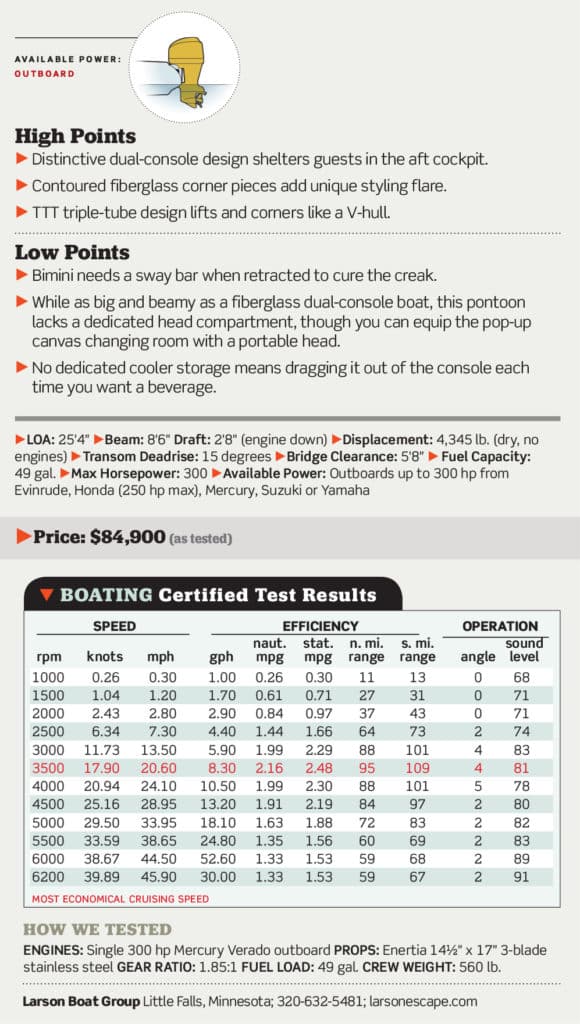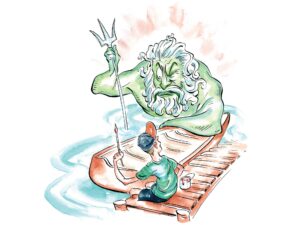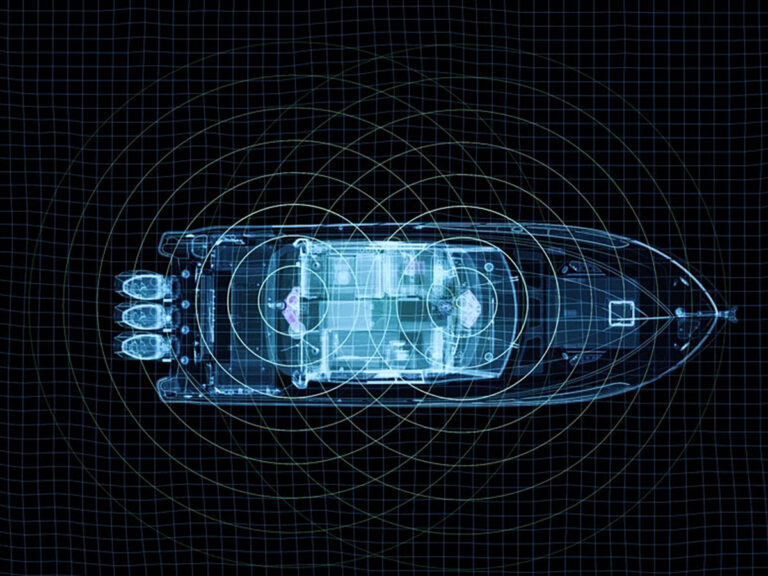
Beam: 8’6″
Draft: 2’8″ (engine down)
Displacement: 4,345 lb. (dry, no engines)
Transom Deadrise: 15 degrees
Bridge Clearance: 5’8″
Fuel Capacity: 49 gal.
Max Horsepower: 300
Available Power: Outboards up to 300 hp from Evinrude, Honda (250 hp max), Mercury, Suzuki or Yamaha
More Information: larsonescape.com



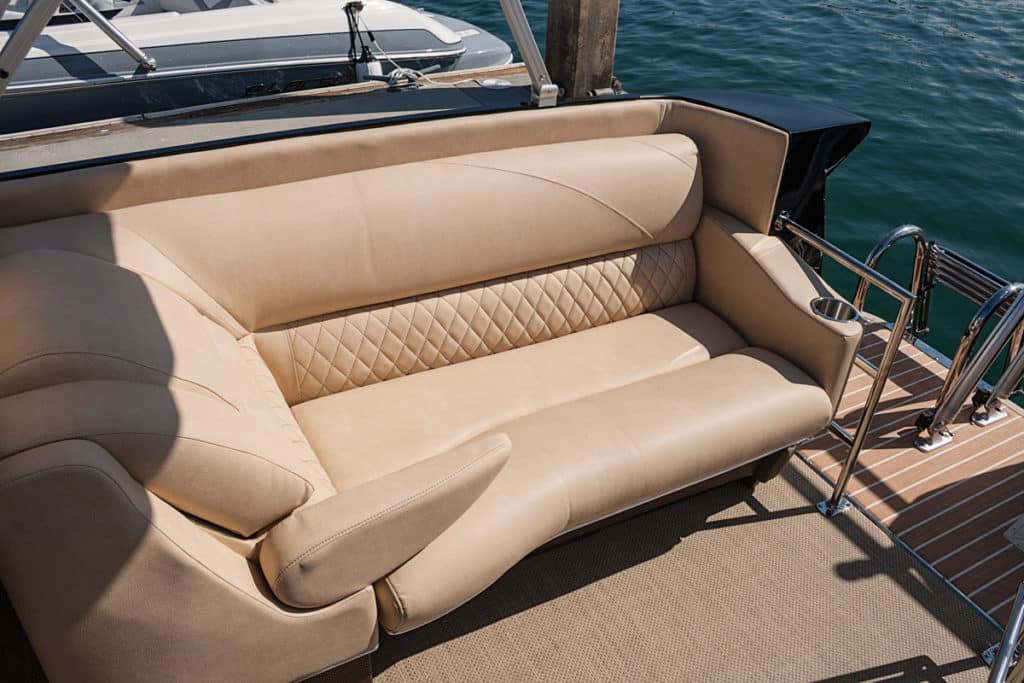



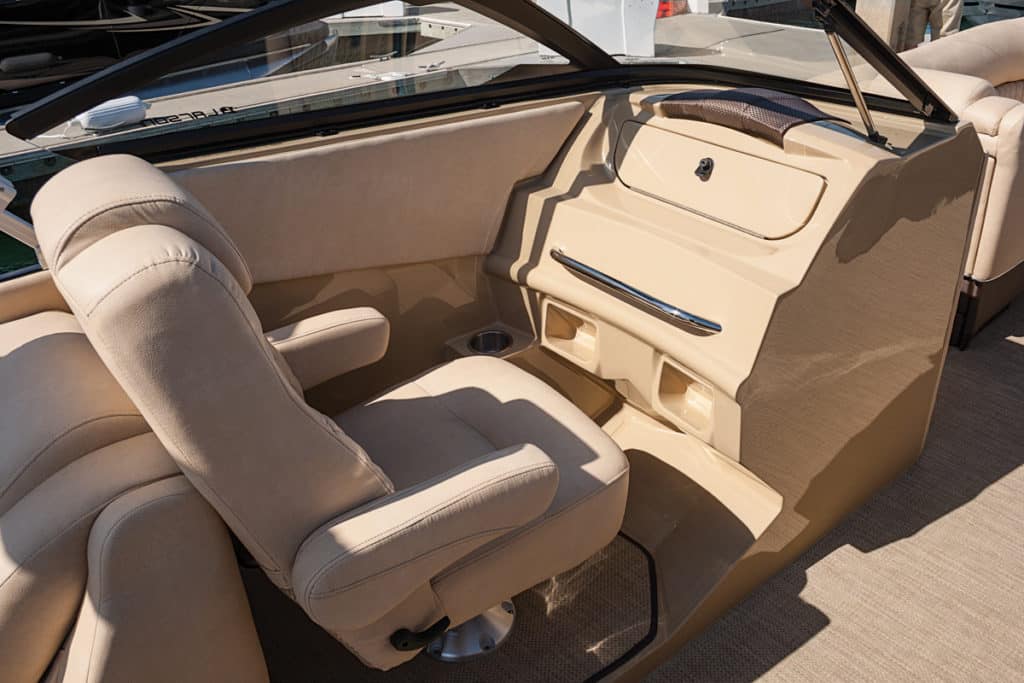


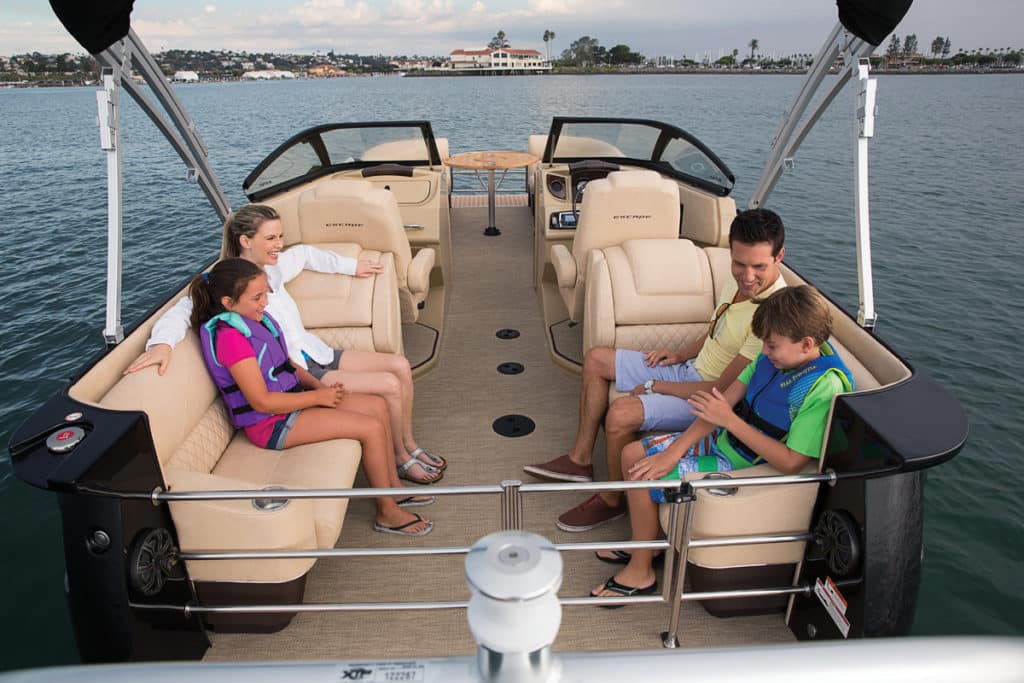

In a boating market jammed with aluminum pontoon models, standing out poses a serious challenge. Yet, once I climbed aboard the new Larson Escape 25 TTT Dual Console with triple tubes and advanced the throttle, I recognized its unique qualities.
The triple-T designator stands for Tapered Tube Technology, and therein lies the key to the performance of this tri-toon. All three of the aluminum tubes are comparable in diameter to 27-inch round tubes, but each is formed and shaped to include reverse chines for greater lift and planing performance, V-hull-like deadrise for stability and smoothness while underway, and outside hull chamfer to enhance cornering. The center tube sets 4 inches deeper than the outer tubes to optimize cornering characteristics.
Larson engineered the hull to maximize the potential of today’s most powerful outboards. Propelled by a single Mercury 300 Verado outboard, our test boat popped onto plane in 1.7 seconds and vaulted to 30 mph in 7.1 seconds with three adults on board and 49 gallons of gas in the tank. These are sterndrive runabout-type numbers.
As we raced across the choppy waters of San Diego Bay toward a top speed of nearly 46 mph, I marveled at the solid feel of this 25-foot-4-inch luxury ’toon. The tubes are welded together to create a unified hull. Each tube is formed with 0.090-gauge aluminum (same thickness used in other pontoon brands such as Premier and Harris FloteBote) but also with 0.125-gauge tube caps, a gauge thicker than most. There’s also a 0.180-gauge full-length keel beam.
Adding structural integrity is a stringer system inside each tube, with six internal bulkheads per tube. About the only boat noise I could hear came from the retracted Bimini top frame as it creaked side-to-side while at speed. The addition of a sway bar would help secure the top and eliminate this noise.
The TTT design responds delightfully to outboard trim. The hull lifts noticeably, and speed climbs, encouraging you to pour on the throttle. We turned at high speed and found that it banks comfortably to the inside during lateral acceleration, whether cornering gradually or turning hard.
The dual-console layout features a wraparound tinted windshield that spans the Escape 25’s full 8-foot-6-inch beam, with a walk-through panel between the molded fiberglass consoles.
A door pulls out from a special compartment in the starboard console to block the wind from the lower portion of the walk-through on chilly days. Close the center panel on the windshield, and you have complete wind protection. I also found that it substantially reduces wind noise. The Merc 300 Verado’s integral power steering and digital throttle and shift made easy work of handling and docking maneuvers.
Looking for a similar ’toon? Premier’s 250 S-Series RF with the optional 36-inch PTX tri-toon package ($77,578 with a 300 hp Mercury Verado) uses 0.090-gauge aluminum for tubes and 0.100-gauge for the nose cones and has a dual-console layout but no center windshield panel.
Seating at the consoles of the Escape comes in the form of plush, swiveling high-back captain’s chairs with articulating armrests. All of the upholstery on our test boat reflected an optional upgrade to soft-touch Ultrafabric Brisa Distressed High UV vinyl.
In the bow you’ll find twin forward-facing loungers with angled backs, headrests and articulating armrests. Separating them is a stainless-steel boarding gate, which provides access to the forward platform. Add the optional filler to create a U-shaped bow lounge and social gathering spot.
A pop-up changing station with canvas enclosure is built into the back of the port lounger, while an oversize tilt-out trash receptacle is accessible from a hatch behind the starboard lounge.
There are latching aluminum boarding gates forward of the windshield on each side of the Escape 25 TTT Dual Console. I like the idea of offering guests the convenience of boarding from either side.
Behind the captain’s chairs you’ll discover two aft-facing lounges. These are great seats for watching the action as you’re pulling tubers with the Escape 25’s anodized aluminum ski pylon that’s mounted over the engine. Abundant storage resides in the molded fiberglass bases under all of the lounges.
I did not see a lot of drink holders on our test boat, though our preproduction boat was missing the portable slide-in armrests for the loungers, which have built-in drink holders. I’d also like to see dedicated, slide-out stowage for a portable cooler. As is, you can stow coolers inside either console.
In addition to the side and bow gates, there’s a stainless-steel boarding gate astern, leading to the aft swim platform and stainless-steel, fold-up, four-step boarding ladder on the starboard side. Both the aft and bow platforms on our test boat featured padded faux teak deck coverings, while the main deck had contemporary, marine-grade sea-grass-style flooring.
The Escape 25 TTT DC earns distinction points by blending aluminum sides with contoured fiberglass corner pieces to replicate the sheer lines of a fiberglass boat. Each bow corner piece incorporates standard LED docking lights, designed to be similar to the look of those on a sports car.
With the Escape 25 TTT Dual Console, Larson has taken a bold step in the evolution of pontoon boats. In terms of both styling and performance, it is most definitely a standout.
Comparable model: Premier 250 S-Series RF
